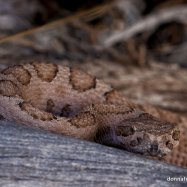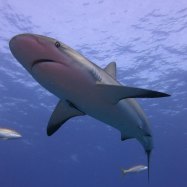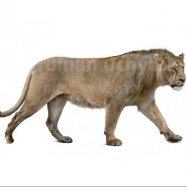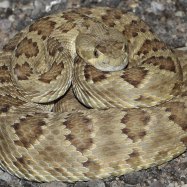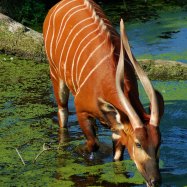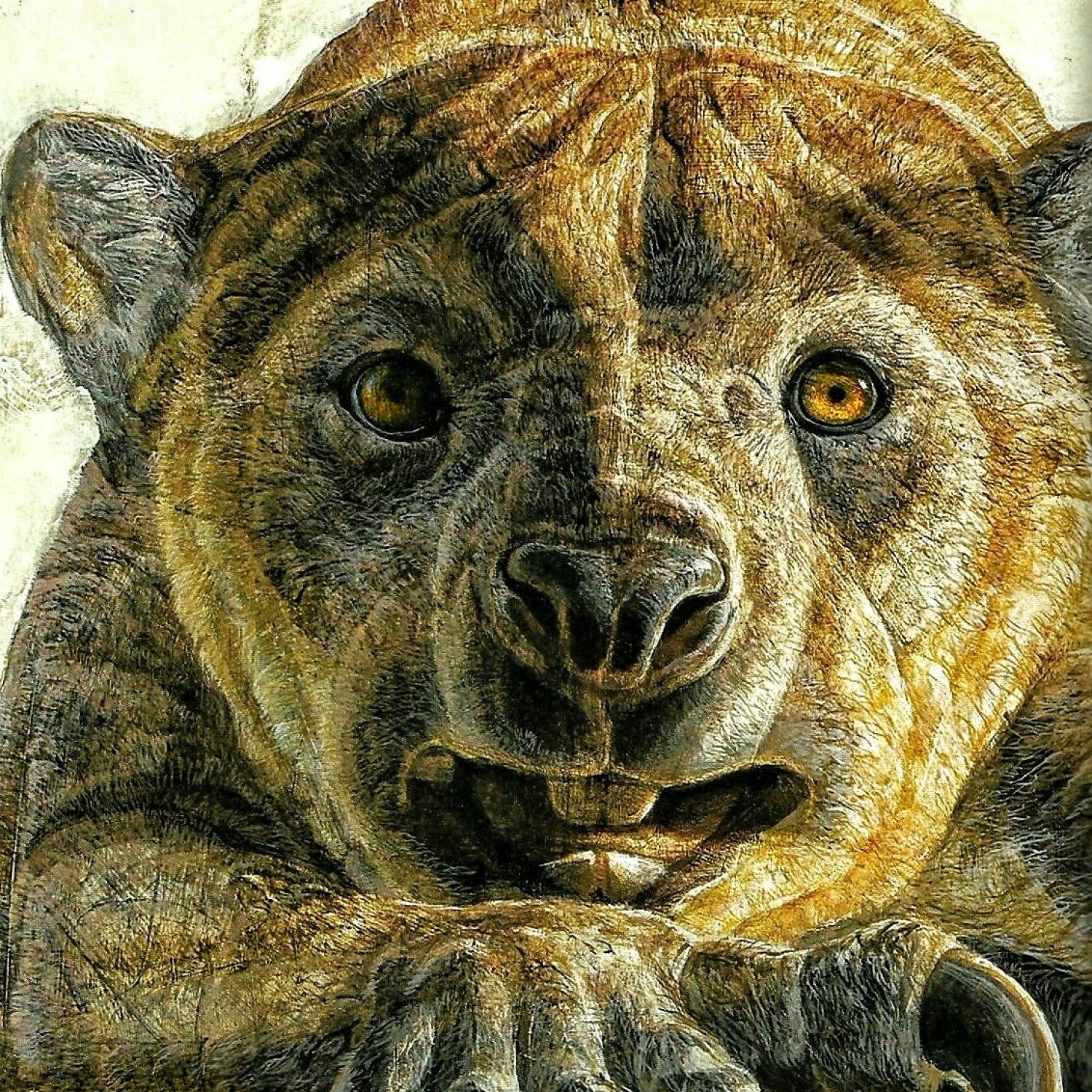
Thylacoleo
1.1 to 1.3 meters (3.6 to 4.3 feet)
Thylacoleo, also known as the marsupial lion, was a powerful and compact animal that roamed the earth during the Pleistocene Era. With a length of 1.1 to 1.3 meters, these animals were slightly larger than a modern-day jaguar. They belonged to the family Thylacoleonidae and their remains were found in the fossil record. These amazing creatures are a testament to the diverse and fascinating array of animals that have existed on our planet. #Thylacoleo #Pleistocene #MarsupialLion
Animal Details Summary:
Common Name: Marsupial Lion
Kingdom: Animalia
Habitat: Woodlands, forests, and scrublands
The Fierce and Mighty Marsupial Lion: A Look at Thylacoleo carnifex
The animal kingdom is full of fascinating creatures, from the smallest insects to the largest mammals. Throughout history, there have been many powerful predators that have roamed the Earth, and one such animal was the marsupial lion, also known as Thylacoleo carnifex. This fierce and mighty creature captured the imagination of many due to its remarkable abilities and unique anatomy.Thylacoleo carnifex belongs to the family Thylacoleonidae and is commonly known as the marsupial lion Thylacoleo. It lived during the Pleistocene Epoch and is estimated to have become extinct around 30,000 years ago. This remarkable animal evolved in Australia, where it roamed freely in the woodlands, forests, and scrublands.
Discovering Thylacoleo carnifex
One of the first things that come to mind when imagining an animal is its appearance. Thylacoleo carnifex's name itself gives a hint at its appearance: Thylacoleo translates to “pouch lion,” while carnifex means “butcher.” This name was given to the animal due to its marsupial nature and its powerful carnivorous feeding method.The marsupial lion was a stout and muscular animal with a compact body shape. Adult males were approximately 1.1 to 1.3 meters (3 Tasmanian Tiger.6 to 4.3 feet) in length and weighed between 101 to 130 kg (224 to 286 lbs). This fierce creature's size and strength were comparable to modern-day African lions, making it one of the dominant predators of its time.
Uncovering the Unique Anatomy
Despite its name, Thylacoleo carnifex was not a true lion. In fact, it was not even a member of the cat family. Instead, it was a marsupial, a type of mammal that differs from most other animals by carrying its young in a pouch.The animal had a unique anatomy that set it apart from other predators. It had a strong, heavily built skull with large incisors and saber-like canine teeth that could reach up to 8 inches in length. These powerful teeth were used for hunting and bringing down its prey. Its bite force was estimated to be much greater than that of modern lions, making it an incredibly efficient predator.
Thylacoleo carnifex's body was also well-adapted to its predatory lifestyle. Its massive forelimbs were equipped with sharp claws that were used for climbing and grappling its prey. Unlike its modern-day marsupial relatives, it had a fused wrist joint that provided strength and stability as it pounced on its targets. This adaptation is believed to have played a vital role in Thylacoleo carnifex's hunting strategy.
The Hunting and Feeding Strategies of the Marsupial Lion
As a carnivorous predator, Thylacoleo carnifex relied on its exceptional hunting and feeding methods to survive and thrive in its environment. Its powerful jaws and sharp teeth allowed it to take down large prey, including other megafauna such as giant koalas, kangaroos, and even diprotodonts, which were massive herbivorous mammals.This fierce animal also had a unique hunting strategy that utilized its impressive climbing and pouncing abilities. It is believed that Thylacoleo carnifex would ambush its prey from above and take it down with a swift pounce, similar to modern-day leopards. This strategy would have been incredibly effective, considering the strength, agility, and ferocity of this mighty animal.
Geographical Distribution and Extinction
Thylacoleo carnifex was endemic to Australia, meaning it was found exclusively in this continent. The animal's remains have been found all over Australia, proving that it was not limited to a particular region but inhabited various habitats. Its fossils have also been discovered in Tasmania, an island off the southern coast of Australia, suggesting that it may have once roamed there as well.Unfortunately, the marsupial lion, along with many other megafauna of the Pleistocene Era, became extinct around 30,000 years ago. The exact cause of its extinction is still unknown, but it is believed to have been a result of a combination of factors, including climate change and human hunting.
The Significance of Thylacoleo carnifex in Today's World
Although the marsupial lion no longer exists, it played a significant role in the ecosystem of its time. As a top predator, it helped maintain the balance of the environment by keeping the populations of its prey in check. Its extinction, along with other megafauna, is believed to have had a significant impact on Australia's ecosystem, which is still recovering from the loss of these remarkable animals.Thylacoleo carnifex also offers insight into the evolution of marsupials and the unique traits they possess. Its anatomy, particularly the fused wrist joint, is believed to have evolved independently from other species and is a prime example of convergent evolution.
Conclusion: Remembering the Mighty Marsupial Lion
In conclusion, Thylacoleo carnifex, or the marsupial lion, was a remarkable creature that roamed Australia during the Pleistocene Era. It was a powerful hunter with unique anatomical adaptations that set it apart from other predators. It is a reminder of the diverse and incredible animals that have existed on our planet and the important role they played in shaping our ecosystems.Today, Thylacoleo carnifex may only exist in the fossil record, but its legacy lives on through scientific discoveries, artistic reconstructions, and cultural representations. What started off as a few fragments of bones unearthed in the Australian outback has now become a significant piece in the puzzle of our planet's history. Let us remember and honor the fierce and mighty marsupial lion, a truly remarkable animal.

Thylacoleo
Animal Details Thylacoleo - Scientific Name: Thylacoleo carnifex
- Category: Animals T
- Scientific Name: Thylacoleo carnifex
- Common Name: Marsupial Lion
- Kingdom: Animalia
- Phylum: Chordata
- Class: Mammalia
- Order: Diprotodontia
- Family: Thylacoleonidae
- Habitat: Woodlands, forests, and scrublands
- Feeding Method: Carnivorous
- Geographical Distribution: Australia
- Country of Origin: Australia
- Location: Found in the Fossil record
- Animal Coloration: Variable, likely similar to modern lions
- Body Shape: Powerful and compact
- Length: 1.1 to 1.3 meters (3.6 to 4.3 feet)
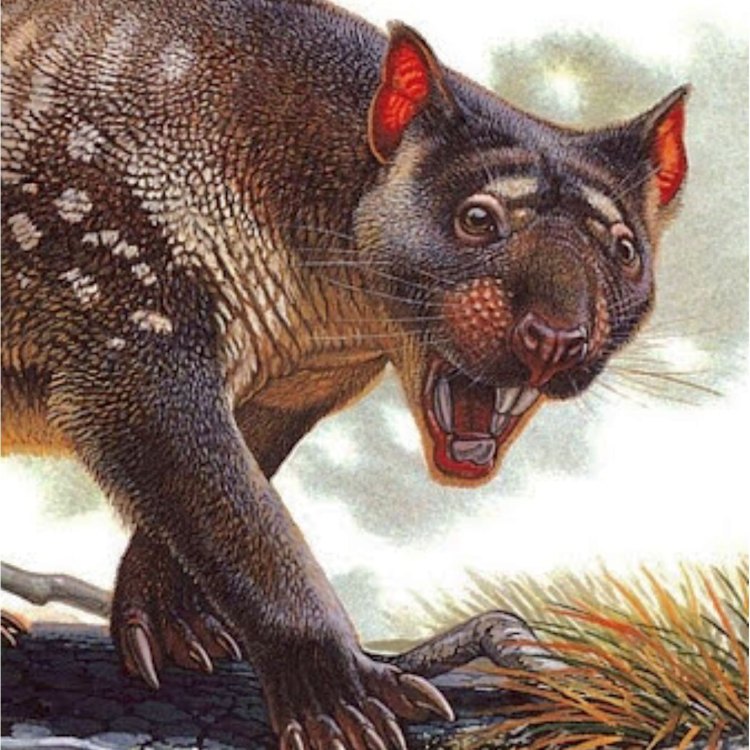
Marsupial Lion
- Adult Size: Similar in size to a large dog
- Average Lifespan: Unknown, estimated to be around 15 years
- Reproduction: Marsupial
- Reproductive Behavior: Females carry undeveloped young in a pouch
- Sound or Call: Unknown, no vocal cords in the fossil record
- Migration Pattern: Unknown
- Social Groups: Likely solitary or lived in small groups
- Behavior: Ambush predator
- Threats: Habitat loss and climate change
- Conservation Status: Extinct
- Impact on Ecosystem: Predator
- Human Use: None
- Distinctive Features: Powerful jaws and large, retractable thumb claws
- Interesting Facts: Thylacoleo had the strongest bite of any known mammal, capable of crushing bones
- Predator: None, apex predator
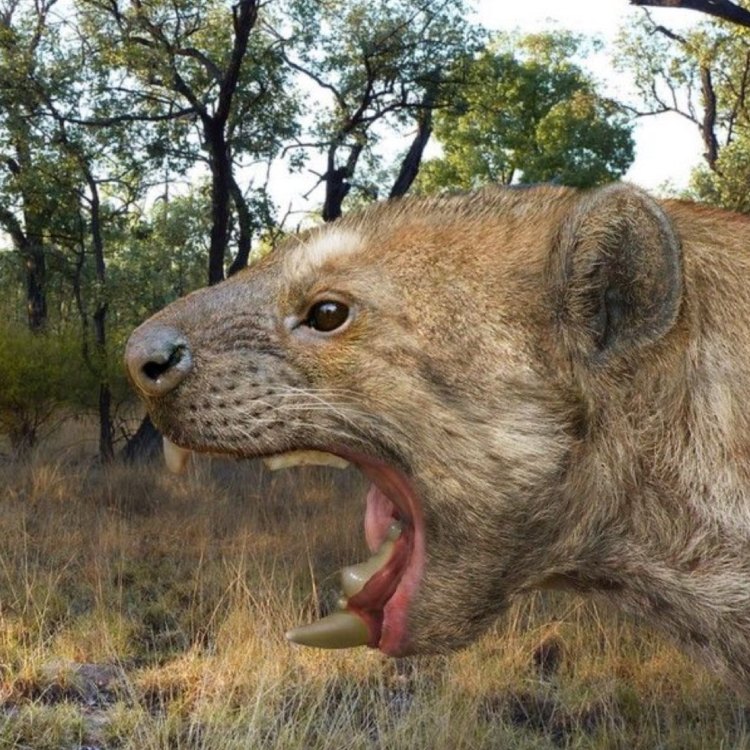
Thylacoleo carnifex
The Mysterious and Powerful Thylacoleo: An Extinct Ambush Predator
In the lush and diverse landscapes of Australia, a mysterious creature once ruled the land. This creature, known as Thylacoleo, was a formidable predator that roamed the continent for thousands of years. Despite its impressive size and strength, Thylacoleo has left little evidence of its existence, leaving many to wonder about its unique features and behaviors.Thylacoleo, also known as the "marsupial lion," is an extinct species that lived in Australia during the Pleistocene epoch, approximately 2 million to 46,000 years ago PeaceOfAnimals.Com. Its name comes from Greek and means "pouch lion," as it was a marsupial, like modern-day kangaroos and koalas. This means that females carried their undeveloped young in a pouch until they were fully developed.
One of the most fascinating things about Thylacoleo is its distinctive features. It was similar in size to a large dog, with an average weight of 100-130 pounds and a height of about 2-3 feet at the shoulder. However, what made Thylacoleo truly unique were its powerful jaws and large, retractable thumb claws. These claws were its most potent weapon, used for grasping, climbing, and killing prey.
But perhaps the most incredible feature of Thylacoleo was its bite. According to studies, Thylacoleo had the strongest bite of any known mammal, capable of crushing bones with its massive, powerful jaws. It is estimated that its bite force was three times that of a modern-day lion or tiger Tiger Salamander. This incredible strength allowed Thylacoleo to take down prey much larger than itself, making it an apex predator.
While its exact reproduction and social behavior are still unknown, based on its closest living relatives, Thylacoleo was likely a solitary predator or lived in small groups. Its reproduction was also marsupial, with females carrying their young in a pouch until they were fully developed. However, unlike other marsupials, Thylacoleo had no vocal cords, so its sound or call remains a mystery.
Thylacoleo's behavior was that of an ambush predator. It would hide and wait for its prey, pouncing on them with its powerful jaws and using its retractable thumb claws to latch onto their bodies. Its diet is believed to have consisted of large herbivores such as kangaroos, wallabies, and even giant wombats. Its strong teeth and jaws were well-adapted for slicing through tough vegetation and crushing bones, enabling it to survive and thrive in the harsh Australian environment.
Despite its strength and ferocity, Thylacoleo's reign did not last forever. Its extinction is believed to have been caused by a combination of habitat loss and climate change. As the continent's climate changed and forests were replaced by open savannas, Thylacoleo's prey became scarce. This, coupled with competition from other predators, led to its eventual extinction. It remains a mystery as to why such a powerful and successful predator could not adapt to the changing environment.
Today, Thylacoleo only exists in the fossil record, with fossils being found in various locations throughout Australia. However, these fossils are rare, making it challenging to study and learn more about this enigmatic creature. Scientists have been able to piece together information from the few remains found, but there is still much that is unknown about Thylacoleo.
In terms of its impact on the ecosystem, Thylacoleo played a crucial role as a top predator. Its presence would have helped to keep the population of herbivores in check, preventing overgrazing and maintaining a balanced ecosystem. With its extinction, the ecosystem would have been altered, and other predators would have had to fill the gap left by Thylacoleo.
Despite its fascinating features and important role in the ecosystem, Thylacoleo's extinction is a saddening reality. Unfortunately, it is not the only extinct species in Australia, with many others such as the Thylacine, also known as the "Tasmanian tiger," facing a similar fate. It is a reminder of the negative impact that human activities, such as habitat destruction and climate change, can have on the environment and its inhabitants.
Despite its extinction, Thylacoleo continues to captivate people's imagination, with many fascinated by its powerful jaws and retractable claws. Its unique features and mysterious behaviors make it an intriguing subject for scientists and researchers, who continue to study and learn more about this enigmatic predator.
In conclusion, Thylacoleo was a formidable predator that once roamed the Australian continent. With its powerful jaws, large retractable claws, and impressive bite force, it was an apex predator that ruled the land. Despite its extinction, Thylacoleo's legacy lives on, and its story continues to enthrall and fascinate people today. It serves as a reminder of the fragility of our planet and the importance of preserving its diverse and unique inhabitants.

The Fierce and Mighty Marsupial Lion: A Look at Thylacoleo carnifex
Disclaimer: The content provided is for informational purposes only. We cannot guarantee the accuracy of the information on this page 100%. All information provided here may change without prior notice.


